The relationship between past climate and prehistoric Mediterranean agriculture
From paleoclimate variables to prehistoric agriculture: Using a process-based agro-ecosystem model to simulate the impacts of Holocene climate change on potential agricultural productivity in Provence, France
is the title of a publication co-authored by Daniel A. Contreras, Alberte Bondeau, Joël Guiot, Alan Kirman, Eneko Hiriart, Loup Bernard, Romain Suarez and Marianela Fader.
This paper explores the relationship between past climate and prehistoric Mediterranean agriculture by adapting a process-based dynamic vegetation model to estimate potential agricultural productivity under climate scenarios characterizing the extremes of Mediterranean climate in the Holocene. Quantitative estimates of potential yields are produced under past climatic conditions derived from four Holocene climatic extremes under two different assumptions about the intensity of agricultural practice. This process is discussed with reference to a case study in Provence, examining the methodology and data requirements for modelling past agriculture and considering the implications of the variability in potential agricultural productivity under distinct climate conditions. Special focus is on comparing the range of variability induced by climatic shifts with that achievable through changes in agricultural practices as a means of approaching questions of past vulnerability and resilience.



